LONG-TERM
Goals
GRI 103-2, 103-3
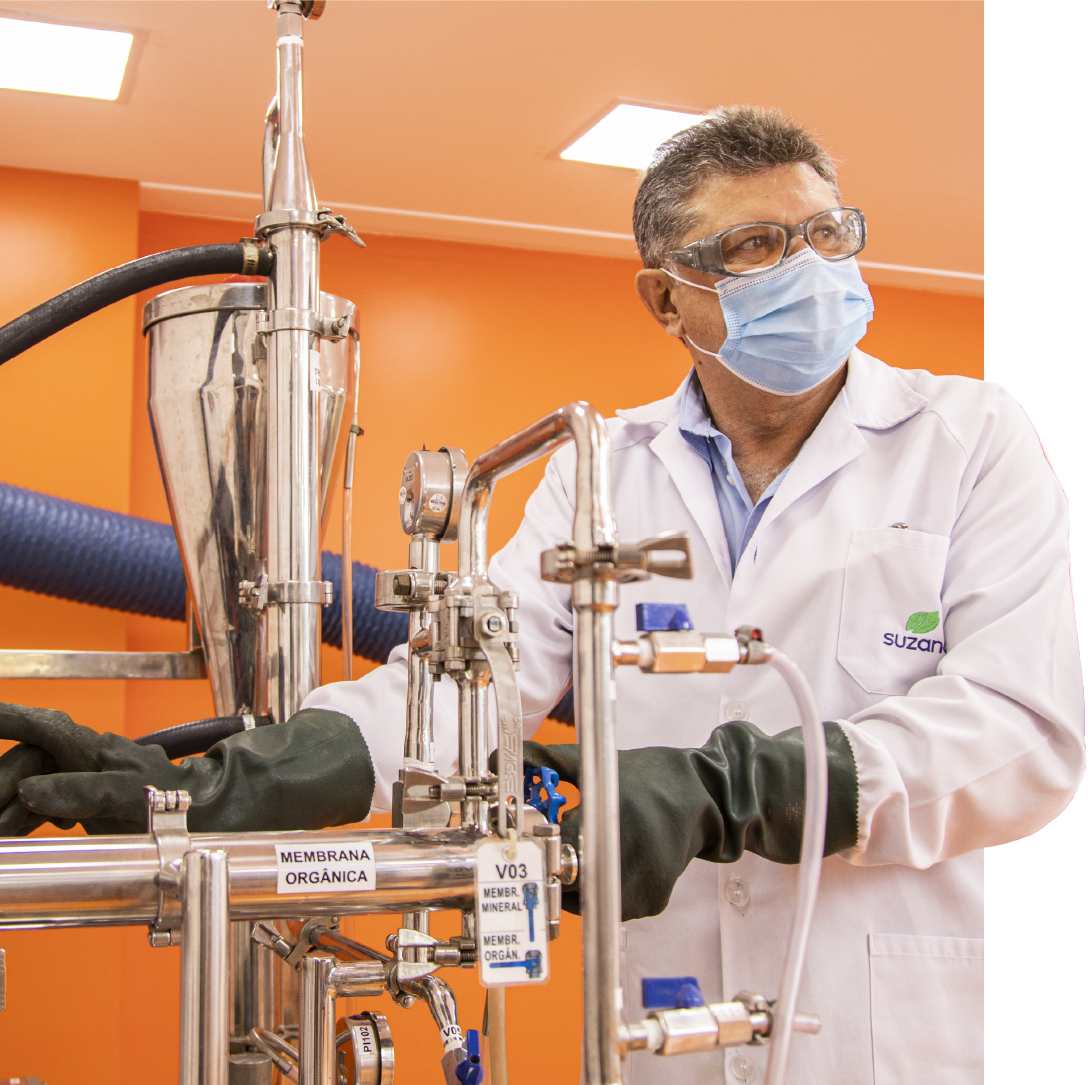
GRI 103-2, 103-3
More than just saying that there is a commitment to sustainability, we have to demonstrate it, take action, and engage in it. Suzano’s Long-Term Goals are commitments that will add value to the company and to society as a whole.
The process of integrating Suzano’s sustainability strategy in its business areas accelerated in 2020. Shortly after the disclosure of its Long-Term Goals (LTG), the company started to mobilize the various teams involved in the topics covered and to build a governance model for the goals. The idea behind this initiative is to allow the company to systematically monitor the main indicators, risks, and opportunities of the commitments made, as well as its performance in the sustainability indexes. At the same time, the governance model allows the teams involved to act in an integrated manner, contributing to the dissemination and inclusion of these topics in the company’s decision-making processes.
The governance structure has a group composed of Directors, responsible for strategic management and a critical analysis, and eight working groups, composed of representatives from different areas who work on the achievement of the goals. In this case, the methodology used was built taking into account management criteria from international standards.
In 2020, in a continuous effort to integrate the sustainability strategy at all levels of the business, Suzano linked the variable pay of Directors and Managers (both at the executive and functional levels) to the development and results of the Long-Term Goals associated with their respective areas of operation.
This is one of the decisions that demonstrate the company’s commitment to achieving the goals by 2030. As a result, the variable pay of 100% of the Managing Directors is now linked to at least one of the Long-Term Goals.
Stakeholder engagement significantly contributes to the evolution of the organization’s sustainability agenda. In 2020, it contributed to establishing a goal related to the topic of biodiversity, which had not been directly covered in the set of goals previously announced.
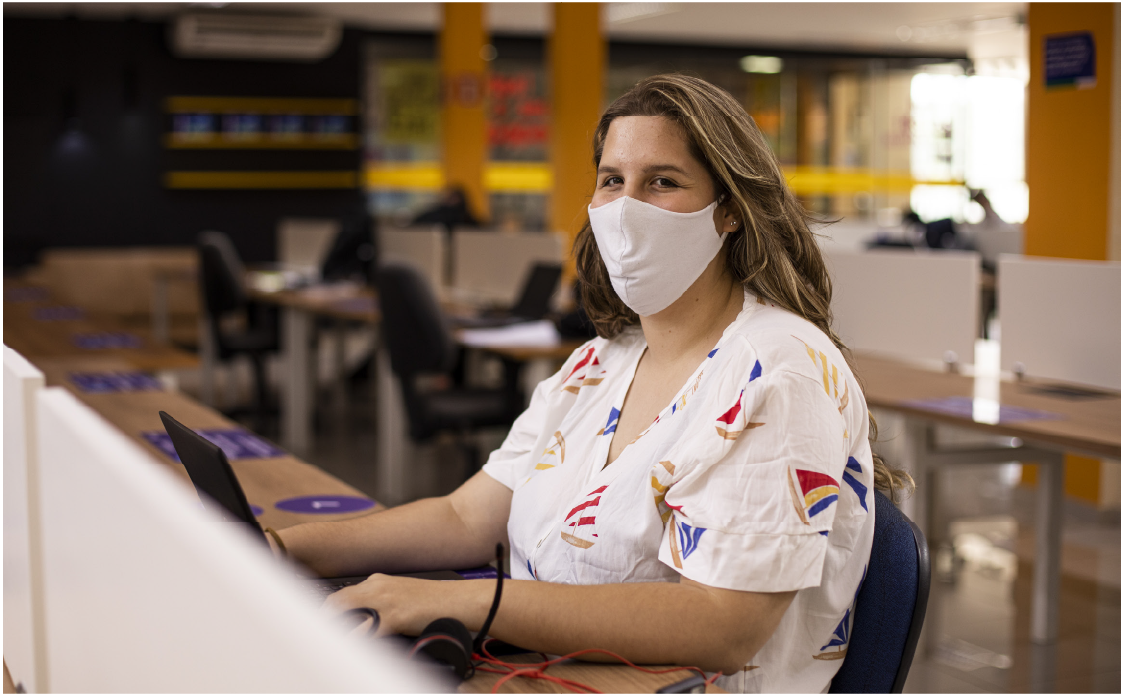
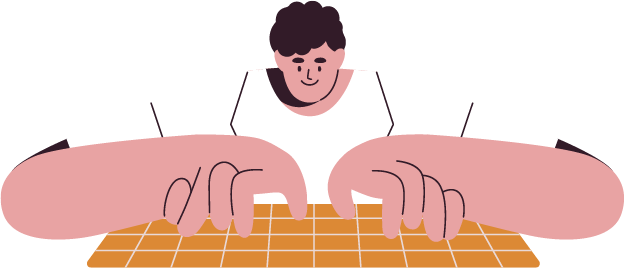
NET REMOVAL OF 40 MILLION TONS OF CARBON FROM THE ATMOSPHERE.
In 2020, we removed 15,200,311.6 ton of CO2eq from the atmosphere. This volume of removals results from the expansion of planted and native forest areas in our forest base and from increased productivity in our eucalyptus forests.
Baseline: 0 (jan/2020)*.
Progress in relation to the baseline for the goal: 38%.
* This does not mean that Suzano did not remove carbon from the atmosphere prior to 2020. It only means that, for the purpose of the goal, removals will be accounted for as of this year.
Our goal is to once again achieve a significant balance in net carbon removal, thus maintaining our positive balance. To make this happen, we will expand conservation areas and planted base areas, in accordance with actions designed for the first years of the goal.
OFFER 10 MILLION TONS OF PRODUCTS FROM RENEWABLE SOURCES THAT CAN REPLACE PLASTIC AND PETROLEUM PRODUCTS.
We supply the market with products from renewable sources that can replace plastics and other petroleum products, maintaining the level offered in 2019 of about 200 thousand tons. Despite the fact we have not observed representative results towards the target, we have advanced in the development of food contact paper, with the Bluecup Bio® and Loop® lines, and flexible packaging for the cosmetics and food industries.
Baseline: 0 (2020).
Progress in relation to the baseline for the goal: 0%*.
* This does not mean that Suzano did not offer products that replace oil products prior to 2020. It just means that, for the purposes of the goal, this replacement started to be calculated and recorded as of that year.
We plan to continue investing in the development of new possibilities using our eucalyptus trees.
LIFT 200,000 PEOPLE OUT OF POVERTY IN OUR AREAS OF OPERATION.
With our job and income generation programs in priority municipalities, we lifted 2,285 people out of poverty, which corresponds to 746 families.
Baseline: 0 (jan/2020).
Progress in relation to the baseline for the goal: 1.14%*.
* Despite having reported in 2020 that we were going to develop the goal using as a baseline 32,000 people who had already been lifted out of poverty until 2019, we chose to start from zero to ensure a more effective assessment of our contribution to poverty eradication.
We will continue to expand our actions to generate work, income, and social action in order to lift another 8,000 people out of poverty throughout 2021.
15% REDUCTION IN SCOPE 1 AND 2 EMISSIONS PER TON OF PRODUCTION.
In 2020, our specific emissions intensity per ton of production was 0.1929 tCO2e/t. This number was achieved thanks to numerous initiatives related to efficiency and reduction in the use of fossil fuels.
Baseline: 0.2133 tCO2e/t (2015*)
Progress in relation to the baseline for the goal: 63.9%.
* Our emissions intensity and goal are in line with the Paris Agreement, established in 2015, and among the lowest in the industry according to the Transition Pathway Initiative.
We will continue working to reduce fossil fuel consumption in our operations by means of engineering and efficiency projects and by maximizing self-generation of renewable energy.
INCREASE WATER AVAILABILITY IN 100% OF CRITICAL WATERSHEDS.
Our focus in 2020 was the characterization of 44 watersheds as critical after assessing 100% of Suzano’s areas.
Baseline: 0 (Jan/2020).
Progress in relation to the baseline for the goal: 0%.
* The assessment and identification of critical watersheds was fundamental to define the areas that will require specific actions to increase water availability starting in 2021.
Our goal is to implement management actions in 5% (4,500 ha) of the forest areas included in the watersheds deemed critical.
REDUCE BY 15% THE VOLUME OF WATER WITHDRAWN IN INDUSTRIAL OPERATIONS.
The volume of water withdrawn for our industrial operations was 28.6 m³/t*, a reduction of 1.2 m³/t compared to the baseline for the goal.
Baseline: 29.8 m³/t (2018).
Progress in relation to the baseline for the goal: 26.7%*.
* This value is obtained by dividing the volume of water withdrawn for industrial operations, in cubic meters (m³), by the total production of pulp and paper at the units, in tons (t).
Our goal is to reduce water withdrawal, aiming for a result that does not exceed the 28.7 m³/t mark in our industrial units. To this end, we are going to implement actions to optimize water use, which include changing equipment to improve water efficiency and using reclaimed water in machinery.
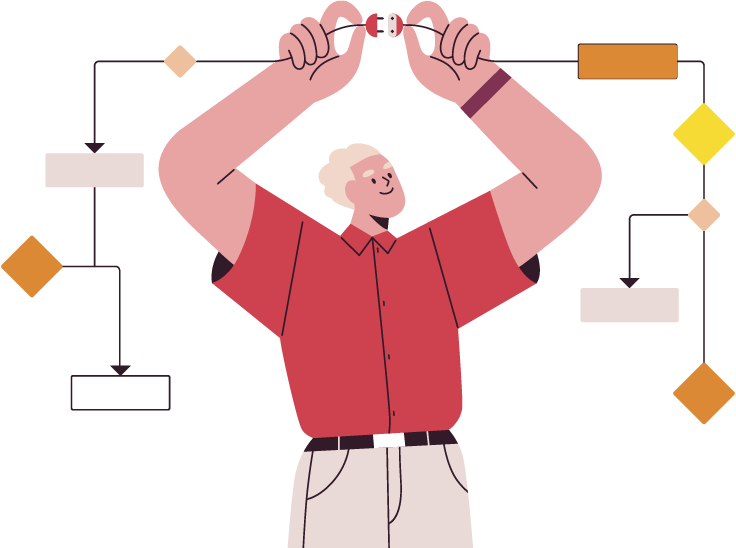
Learn more about our actions in our Indicators Center.
REDUCE THE INDUSTRIAL SOLID WASTE SENT TO OUR OWN OR THIRD-PARTY LANDFILLS BY 70%, TRANSFORMING THEM INTO BY-PRODUCTS.
We reduced to 31.7 kg/t* the total volume of solid industrial waste sent to landfills.
Baseline: 44.3 kg/t (2018).
Progress in relation to the baseline for the goal: 40.6%.
* This value is obtained by dividing the volume of solid industrial waste sent to the company’s own and/or third-party landfills in kilograms (kg), by the total production of pulp and paper at the units, in tons (t).
The expected result is to reduce waste sent to landfills to 28.05 kg/t. To this end, we are going to start the operation of the waste center in Imperatriz (Maranhão state) and develop engineering and technical-economic feasibility studies at the units in Mucuri (Bahia state) and Suzano (São Paulo state).
INCREASE RENEWABLE ENERGY EXPORTS BY 50%.
In 2020, despite the generation losses we had, we supplied 193 MWm of renewable energy to the national system. We also implemented projects to increase the efficiency of steam generation and optimize energy efficiency using data science.
Baseline: 214 MWm (2018).
Progress in relation to the baseline for the goal: 0%*.
* In 2020, we had losses in power generation due to adjustments required by the product quality strategy, which resulted in a new export plan.
Our goal is to export 240 MWm** of renewable energy to the national system. We will continue to work on the development of projects to increase the availability of steam for power generation.
** The result of the goal considers 50% of the power exported by Veracel, a joint venture between Suzano and Stora Enso.
INCREASE THE EDUCATION INDEX (IDEB) BY 40% IN ALL PRIORITY MUNICIPALITIES.
We developed the Suzano Education Program methodology and 15 additional indicators for monitoring the goal. In addition, we mapped 32 municipalities that will be considered as priorities for implementing the goal.
Baseline: to be determined.
Progress in relation to the baseline for the goal: 0%*.
* The definition of the priority scope of the activities of the programs was fundamental for the actions to achieve the planned results as of 2021.
We will continue to invest in actions to improve the quality of basic education in the municipalities considered to be priorities for our operations. We will also expand the scope of the program and reach approximately 6,700 direct beneficiaries.
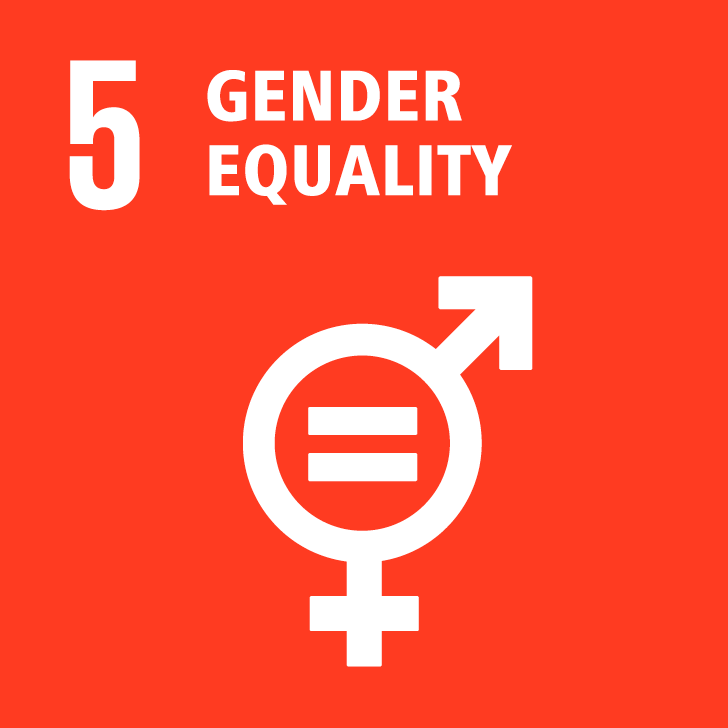
ACHIEVE 100% INCLUSIVE ENVIRONMENT FOR LGBTI+. *
In 2020, we increased our communication and engagement regarding this topic, seeking to improve its visibility and representativeness. We also increased the scope of measuring an inclusive environment for Suzano’s other affinity groups. This resulted in a 92.4% perception of an inclusive environment by LGBTI+ people.
Baseline: 92.4% (Dec/2020).
Progress in relation to the baseline for the goal: 0%**.
** In 2020, we adopted a new survey methodology to measure inclusive environment, expanding its scope. This led us to establish a new baseline, justifying the result of the goal. This does not mean that we have not advanced in the design and execution of actions to achieve the goal.
Our goal is to achieve a 93.8% inclusive environment in 2021. To make this happen, efforts will be made to improve the self-reporting process of LGBTI + people, among other actions.
** At Suzano, we chose to use the acronym LGBTI+, which stands for lesbians, gays, bisexuals, transsexuals, intersexuals, and “+” symbolizing all other sexual orientations, gender identities and expressions.
HAVE 30% OF WOMEN IN LEADERSHIP POSITIONS (FUNCTIONAL MANAGERS AND ABOVE).
We achieved the goals set for 2020 of increasing the number of women in the organization and in supervisory positions and above by 10%. This result contributed to reaching 19% of women in leadership positions.
Baseline: 16% (2019).
Progress in relation to the baseline for the goal: 63.3%.
Our goal is to have 21% of women in leadership positions. To make this happen, a mentoring program will be put in place to accelerate women’s careers, among other actions.

Learn more about our actions
in our Indicators Center.
ENSURE 100% ACCESSIBILITY AND ACHIEVE A 100% INCLUSIVE ENVIRONMENT FOR PEOPLE WITH DISABILITIES.
We defined the baseline for accessibility in offices and industrial units in Brazil, using technical standards as a basis. We also revised the methodology that measures an inclusive environment in order to expand its scope, which now considers all of Suzano’s affinity groups. With this, we set a new baseline for the 91.8% goal of a perceived inclusive environment, according to the survey result* .
Baseline: 38.4% accessibility (Dec/2020) and 91.8% inclusive environment (Dec/2020).
Progress in relation to the baseline for the goal: 0% accessibility and 0% inclusive environment*.
* In 2020, we adopted new methodologies for measuring inclusive environment and accessibility, which generated a new baseline.
We are going to intensify our actions to improve accessibility, taking into consideration studies and analyses about the need to adapt the existing spaces.
HAVE 30% OF BLACK* EMPLOYEES IN LEADERSHIP POSITIONS (FUNCTIONAL MANAGERS AND ABOVE).
Our goal in 2020 was to increase the number of Black employees in non-operational positions by 6% to expand their possibilities for career growth. As a result, we achieved a 3% increase in the number of Black employees in non-operational positions, which, however, did not make a significant contribution to the long-term goal. We ended the year with 21% of Black employees in leadership positions (management and above).
Baseline: 22% (2019).
Progress in relation to the baseline for the goal: 0%**.
** No progress was made against the baseline for the Long-Term Goal, but we did make progress in designing and executing actions to achieve the goal, and increased the number of black employees in non-operational positions.
Our goal is to have 23% of Black employees in leadership positions in 2021. To make this happen, we are going to develop new education and training fronts and implement actions to increase the share of Black employees at Suzano.
* Terminology used by the Brazilian Institute of Geography and Statistics (IBGE), including Blacks and “Pardos”. In Brazil, “Pardo” is an ethnic and skin color category used by the Brazilian Institute of Geography and Statistics (IBGE) in the Brazilian censuses.
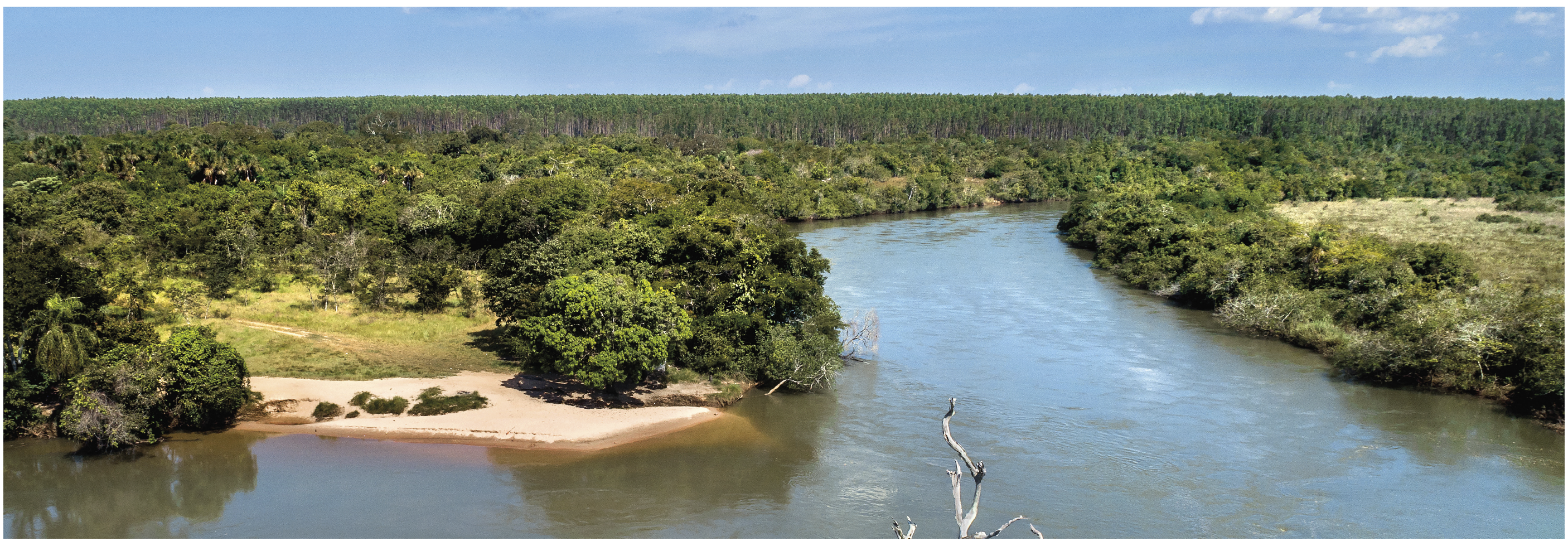
One of the main threats to biodiversity loss in Brazil and worldwide is the fragmentation of habitats. Changes to ecological interactions in the landscape; isolation of species with a consequent reduction in genetic variability and reproductive success; reduced resilience of species to climate change; imbalance among pests, diseases, and natural enemies are some of the main impacts caused by this fragmentation.
In view of this and aware that the biomes where Suzano operates are facing different levels of fragmentation, in 2020, through a collaborative process developed in partnership with the Ecofuturo Institute and an active listening process (50 interviews conducted with approximately 40 institutions of high relevance in Brazil and abroad, representing NGOs, the public and private sectors, and academia), we worked to build a long-term commitment to biodiversity conservation in three of the six biomes in Brazil—considering the representativeness of the company’s entire territorial extension and influence—that will be launched in 2021.
This process also allowed us to identify, based on the priority areas for conservation (defined by the Ministry of Environment) and on fully protected Conservation Units (according to the National System of Conservation Units – SNUC – 2010), the main areas of fragmented natural remnants in our country.
The structuring of this commitment will be based on three major priorities: connect, engage and protect. And, within them, the following strategic lines of action: biodiversity corridors at the landscape scale, network of conservation units; conservation of populations of key species; business models that create shared value; biodiverse production models; relief of anthropic pressures on biodiversity. We also believe that, for the success of the strategy we are developing, it is important to rely on the engagement of strategic players, both internal and external, forming a collaborative, diversified and continuous movement.
In 2020, Suzano also worked on the topic of Ecosystem Services relating carbon, water, and biodiversity. Because they are intrinsic to our business, these natural resources are considered to be an asset of great value added to the company, i. e., these are elements that make up our natural capital.
Expanding and evolving the understanding of this topic is part of our sustainability strategy, since the integrity of ecosystem services is a key requirement for the fulfillment of the commitments we have publicly assumed. In order to create and share value based on this topic and ensure that it is increasingly integrated into the company’s daily activities, in 2021 we will start the implementation of a structured operation strategy. In the short term, we will work on the valuation of our natural capital, which will give us a better understanding of where we are, from a regenerative economy standpoint. In the medium term, this will allow us to consistently introduce this concept into our key processes so that we can monitor and improve their performance based on the same methodology.